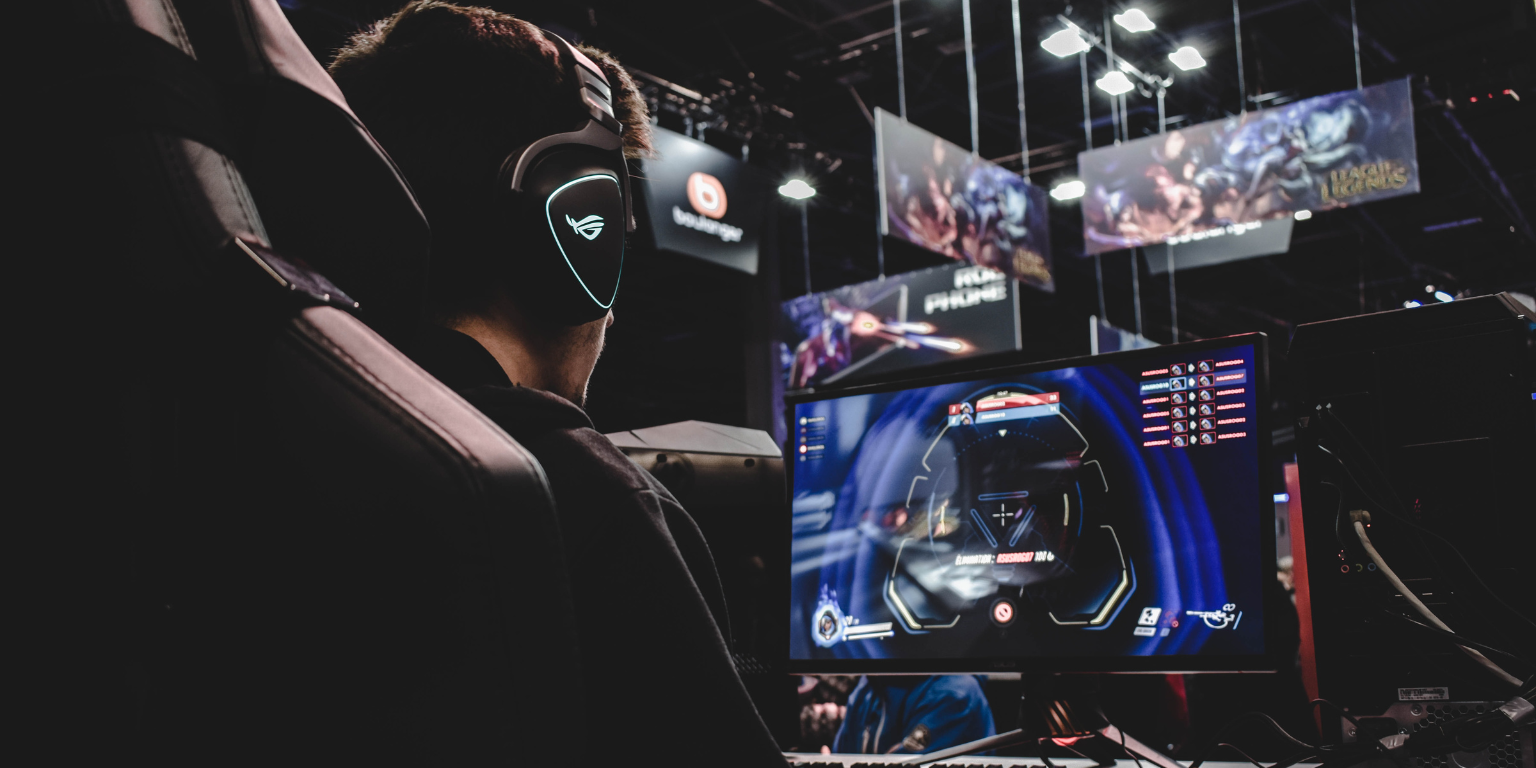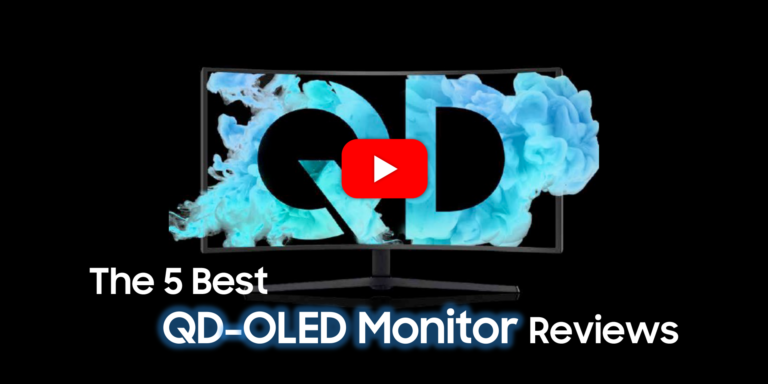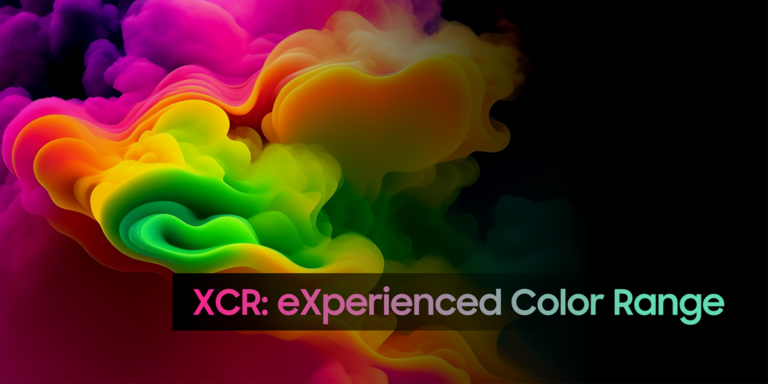
What Specs to Look For in a Gaming Monitor
Wondering what to look for in a gaming monitor? We’ve rounded up the specs needed for the best gaming experiences, including resolution, color, and ports.
Gamers have always led the way in the adoption of the highest quality and cutting-edge technology. Choosing a display is like a performance athlete trying to collect every competitive advantage to be their best version. That’s why selecting a new gaming monitor is a big decision — particularly when it comes to immersive and high-speed gaming. To make an informed decision, you’ll need to understand what makes a good gaming monitor. QD-OLED monitors are evolving, and new features can enhance your gaming further.
We’ve compiled a list of the most important specs for a gaming monitor to help you choose the best one for your needs. You can look out for these specifications across all display models, even if they are not explicitly sold as a ‘gaming monitor’.
Refresh rate
Refresh is the frequency that a monitor updates with new images each second. It’s measured in hertz (Hz), so, for example, 60Hz means that the image is updated 60 times per second.
Most older monitors will have a refresh rate of 60Hz. While this seemed OK when the technology first emerged, you’ll notice how clunky a 60Hz experience feels once you have experienced 120Hz. Most of today’s games will be built on the assumption you’ll have a refresh rate of at least 120Hz. If you’re playing games on a 60Hz monitor, you’ll notice lag and motion blur, which can lead to a poor gaming experience. Plus, it can increase the risk of eye strain.
Choosing a 120Hz monitor will make your gaming experience smoother. It can also give you a competitive edge when playing against those with slower refresh rates. You’ll be able to see things — including opponents and objects to avoid — faster with a 120Hz monitor.
Dell Alienware AW3423DW — the first gaming monitor to use a Samsung QD-OLED panel — has an impressive refresh rate of 175Hz. This speedy refresh rate is particularly desirable to professional gamers. The Samsung Odyssey OLED G8 and MSI MEG 342C QD-OLED also have 175Hz refresh rates. Looking for something even faster? The 49” Samsung Odyssey OLED G9 (G95SC) has a refresh rate of 240Hz.
Response time
Response time is how fast a monitor renders each pixel and creates its color. This is measured in milliseconds. The lower the number, the faster the monitor. A quicker response time will lead to clearer and more realistic images.
Monitors with a slow response time can lead to an effect known as blurring, which in turn causes a poor gaming experience. Blurring is when the slow rendering time causes moving images to leave a trail behind, as the movement is happening faster than the monitor can keep up with. This results in a blurry image. A fast response reduces these issues.
Gray to gray is one way of measuring a response time.
Gray to gray (G-to-G)
This measures the time it takes for a pixel to change between colors. Once again, the longer this takes, the blurrier the image will be.
Samsung QD-OLED monitors have a fast response time of 0.03 milliseconds. This is so fast that it’s almost instantaneous.
Color performance
Colors are what makes your screen come alive. A QD-OLED monitor with accurate color performance specs helps you enjoy a game’s colors and creative intent as the designer intended.
How accurately colors are replicated can affect gaming experiences. The most important color specification to look for is color volume. This captures how your screen will render the images, from dark shadow details to bright highlights. A display with high color volume can reproduce more shades of color across the luminance range and thus provide a more immersive and engaging experience.
Here QD-OLED stands apart from other displays, with excellent performance in each technical element that creates color.
Color space
Also known as the color gamut, the color space defines the spectrum of colors a display can produce.
Common color spaces include:
- NTSC
- sRGB
- Adobe RGB
- DCI-P3
- Rec. 2020
Developed by the Digital Cinema Initiatives, DCI-P3 has 25% more color space than sRGB. As a result, it can show a wider range of colors. It’s also compatible with HDR content as it can use 10-bit color compared to sRGB’s maximum 8-bit.
Samsung QD-OLED monitors can reproduce 99.3% of the DCI-P3 color space, making gaming experiences more vibrant.
To learn more about how color spaces differ, visit our guide on what color gamut is.
Contrast ratio
The contrast ratio is the ratio between the brightness of the brightest white and the darkest black rendered on your screen. Higher contrast ratios usually mean that the blacks are darker, which enhances the experience, especially for dark scenes in movies and games. A contrast ratio of 1,000,000:1 (Typ.) means that the white parts of the image will be 1 million times brighter than the black elements.
The higher the top number, the bigger the contrast, the better the image. And this high contrast ratio combined with the pixel level dimming of OLED monitor makes it an excellent choice for those looking for an optimum gaming experience.
Want to learn more? Rtings.com compared the contrast ratio of 280 monitors. Find out which monitors came out on top in Rtings.com’s picture quality tests.
Luminance
Luminance is a measurement of how much light a screen emits. This determines the brightness of a display.
This is measured in candelas per square meter (cd/m2), also known as nits. The more nits, the brighter the display will be.
Samsung’s latest QD-OLED displays have a peak brightness of up to 1000 nits. A monitor with a high amount of nits will lead to a brighter gaming experience. However, look beyond the full white brightness value. Full white brightness is the luminosity at a 100% white window (i.e., a full screen only showing white). You are unlikely to have a full white screen, which is what that number represents. Instead, pay close attention to monitor luminosity at smaller windows like 3% and 10% (also known as peak brightness). Your user experience will be most affected by the luminance capability in these small window sizes, more than just the peak brightness.
The full white brightness value can also be misleading in other ways. Check if this is at a D65 white point. Some manufacturers claim brighter specifications, but if this is a shifted white point, the white will look bluish.
Black level and the ability to reproduce shadow details
The black level is a measure of how dark the darkest colors (i.e., deep black) are. To see the darkest blacks, displays need to avoid backlight leakage. OLEDs do not use backlights (unlike LEDs), so they offer superior black levels.
The ability to reproduce shadow details is often overlooked. Many previous generation OLEDs claimed “perfect black”. This was true, but it also led to ‘black crush’, where shadow details were invisible. As a gamer, you want the deepest blacks, but you don’t want to miss the shadow details.
The Samsung QD-OLED can achieve true black, so the darkest shades are represented in more authentic ways while retaining shadow detailing. With QD-OLED, you are sure to be impressed. It has won the praise of many gamers and reviewers for its ability to reproduce colors and details even in the darkest images. Now your opponents won’t have a clue how you spotted them.
Resolution
Higher resolution monitors can create clearer and sharper images. But only if your graphics card can keep up. If you’re a PC gamer, consider what your graphics card is capable of before you buy. You won’t benefit from a 4K monitor if your graphics card’s maximum resolution is 1440p.
The main resolutions you’ll find on the market are:
1080p / FHD
This is 1920×1080 pixel resolution. While it’s a lower resolution than emerging technologies, it’s the most common resolution for gaming. It’s also usually available as a more affordable option.
1440p / QHD
Offering a slightly higher resolution, 1440p can handle images of 2560×1440 pixels. This is a popular choice as it can make your gaming experience more immersive — as long as your graphics card can handle it.
Samsung QD-OLED monitors are available in quad high definition plus (QHD+), which has a resolution of 3440×1440 pixels, and dual quad high definition (DQHD). DQHD has a resolution of 5120×1440 pixels.
4K / UHD
Also known as ultra-high definition (UHD), 4K has a resolution of 3840×2160 pixels. A 4K gaming monitor will enable you to game with excellent high-quality visuals if you have a compatible graphics card.
Color depth
This refers to the number of different colors a monitor can display. There are many shades, and a greater color depth can accurately show subtle variations in hues.
An additional benefit of a greater color depth is that it reduces color banding, which is when a display struggles with shifting between colors and ‘crushes’ them with inaccurate color bands.
Color depth is measured in a unit called bits.
There are three common color depths:
- 6-bit color (capable of 262,144 distinct colors)
- 8-bit color, also known as True Color (a huge increase to 16.7 million colors)
- 10-bit color, sometimes called Deep Color (another big rise to 1.07 billion colors)
Samsung QD-OLED’s 10-bit depth elevates gaming experiences by making consuming a wide range of accurate colors possible.
High dynamic range (HDR)
HDR monitors can show content with greater contrast, brighter whites, and truer blacks. The improved viewing experience is particularly noticeable when looking at a particularly dark or bright image, as you can see details that could be lost with a standard dynamic range.
You’ll need to play games that support HDR content to make the most of an HDR monitor. Think of this like a high definition (HD) TV; you can only see its full potential when watching HD content. However, even if the game you’re playing is not compatible with HDR, you’ll still know the display will have good gaming monitor specs by virtue of HDR availability.
Samsung QD-OLED displays all offer extended HDR. The 2023 products also meet the Video Electronics Standards Association’s (VESA) DisplayHDR True Black 400 standards. This industry certification helps consumers identify which displays offer brighter, vivid visuals while preserving deep blacks.
Display size
When it comes to gaming, bigger isn’t necessarily always better. The display size that best suits your gaming will depend on the type of games you play.
For games where every second matters, you’ll likely want a more modest size. Many professional gamers play on 24” displays, which is the standard size in most tournaments. The smaller size often offers the advantage of higher frame rates, which help gamers react faster.
However, if you want to fully immerse yourself, a larger curved monitor may be what you’re looking for. These can be particularly effective when playing racing simulators or games set in visually stunning alternative worlds.
Samsung QD-OLED’s performance gaming monitors are available in 34” and 49” display sizes. You can explore the different models on our products page.
Ports
It’s also essential to keep ports in mind when choosing your gaming monitor. You want to ensure you have enough ports to plug in accessories such as mice and a keyboard. You also need to be able to connect it to your console or gaming PC easily. Check your gaming equipment and the ports your set-up requires before making your decision.
The Alienware 34” curved QD-OLED gaming monitor, which uses Samsung panels, provides various connection options, including multiple SuperSpeed USB ports, two HDMI ports, and a headphone port.
Learn more about Samsung QD-OLED
Want to find out about Samsung QD-OLED and its specifications? Visit our technology page to learn how it can take your gaming experience to the next level.


